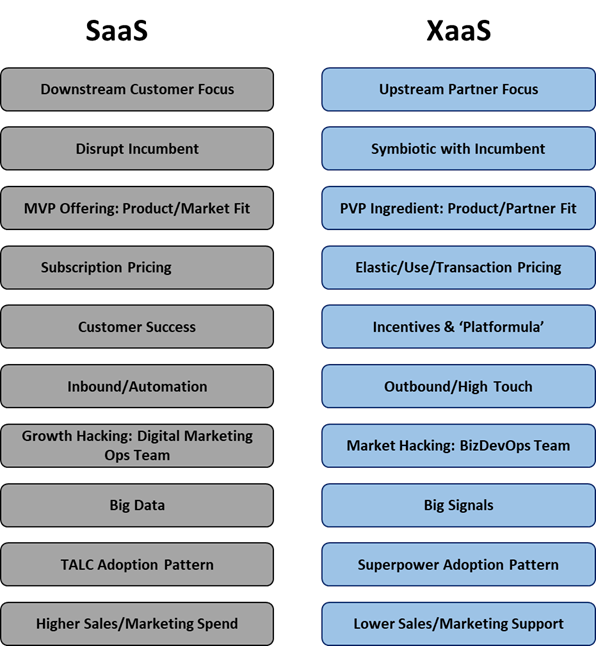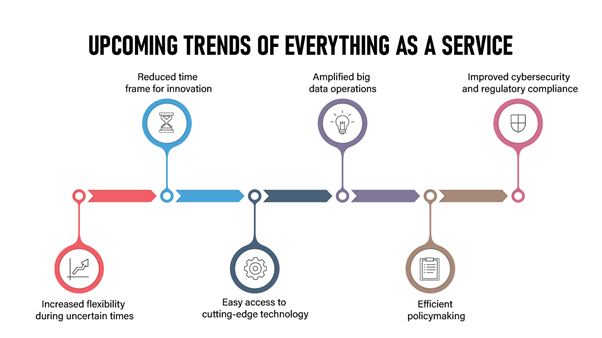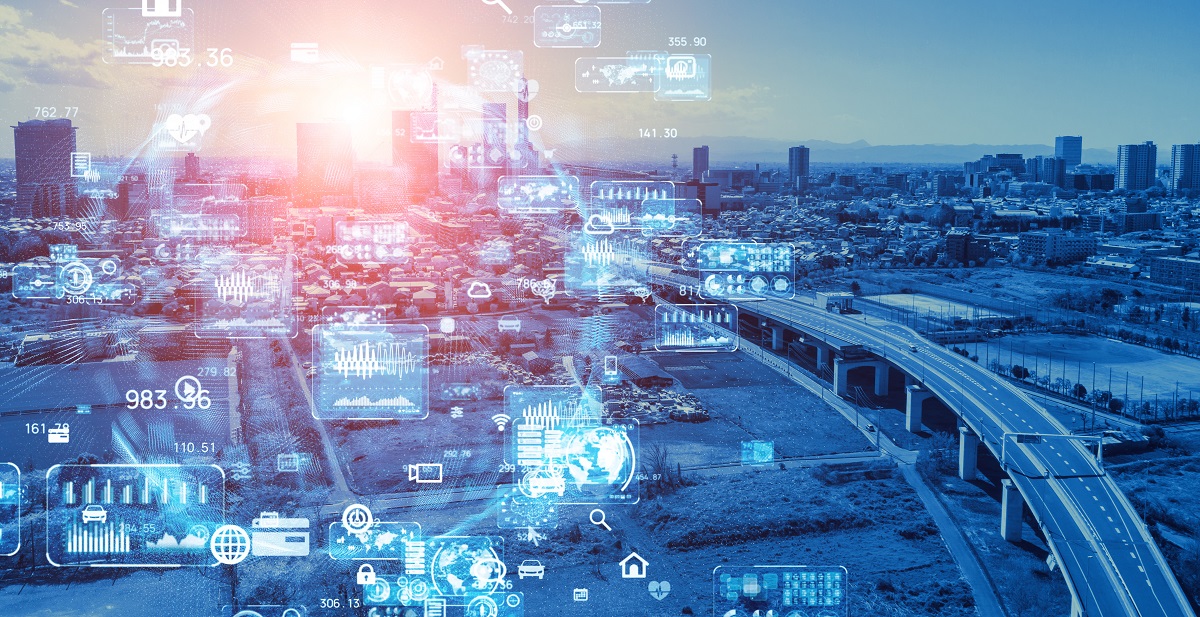We discuss the following topics in this blog:
- XaaS Becoming the New Normal Post-Pandemic
- XaaS Definition and Characteristics
- The transition from SaaS to XaaS
- Servitization and its use cases
- Advantages of Xaas
In addition to these topics, we shall also be answering the following FAQs:
- What is WiFi?
- What is an Optical Fibre Cable?

Contents
XaaS Becoming the New Normal Post-Pandemic
In times of pandemic, remote working became the new normal, with most companies mandating remote working models permanently. Many businesses realized that their IT infrastructure was not adequate. The industry witnessed a massive acceleration towards ‘Anything as a Service’ (XaaS) adoption.
XaaS is the new paradigm forcing digital transformation to ride on XaaS functions. The main goal of the XaaS model is to increase the value for the customer, enabling the customers to shift from high capital expenditure (Capex) to a more predictable operational expense (Opex).
A report by Persistent Research, states that the market for XaaS was projected at USD 5 billion in 2020 and is estimated to reach USD 97 Billion by 2031 at an expected CAGR of 12.5% during the forecast period 2021-2031. Further, a recent study by Deloitte highlights that 75% of respondents believed that the XaaS model encourages innovation and enables faster time to market. In comparison, 39% confessed to using it to close any gaps that existed between them and their competitors.
XaaS Definition Simplified
XaaS is a term that includes the delivery of anything as a service. It takes into consideration the number of products, tools, and technologies that vendors deliver to users as a service over the network, rather than on-premises within an enterprise.
XaaS Key Characteristics
- High Scalability
- Multi-tenancy
- Online and automated provisioning
- It is device independent enabling users to access the software, irrespective of the device that is being used
- Location independence
- Term-based billing or pay-as-you-go models
Moving from SaaS to XaaS
SaaS has been around for eons since the advent of cloud computing. SaaS transformed the software and IT industry in a big way as it provided a digital connection between the service provider and the end-user. With more and more products and services being digitally connected, XaaS is the most innovative way to sign up. Importantly, XaaS offers businesses greater flexibility, scalability, and agility to their existing architecture (see below).

What is Servitization?
Companies look to integrate their products and services into a single package; this is known as servitization. XaaS is built on the theme of how it takes any IT function or any business function, productizes it, and adds multiple layers of services to it. The mix of products and service offerings allows organizations to provide greater value propositions rather than standalone offerings.
Key Use Cases
In a XaaS model, there is a possibility to convert one-time buyers into service subscribers, with the add-on benefits, the typical examples like Spotify, Netflix. Another use case worth mentioning is General Motors (GM), with its Maxis solution built the data-as-a-service platform on top of a private cloud.
Strategies like pricing, marketing, sales forecasting, sales leads, and contact center text analytics are some of the functions that are being supported by it. XaaS made an impact on realty major Cushman & Wakefield, they performed trials using XaaS as a proof of concept as a service, wherein IT partners with the business.
What are Some of the Advantages of XaaS?
- The company can retain ownership of the product and remove it when not required.
- It offers a service model which will cut down costs and ease IT deployments.
- Fewer IT on-premises reflects fewer physical overheads in equipment space, power, IT resources staffing brings down CapEx costs to OpEx costs.
- IT staff can use their time to improve business efficiency.
- A single XaaS provider will offer most of the technology and services that one requires, instead of hunting for each one independently
- XaaS offers a subscription-based business model, pay month on month, no long contracts, offer ease of cancellation
- With the elasticity that the cloud offers, XaaS offers an increasing range of solutions allowing businesses to choose what they want
In a hyper-connected world and competitive landscape, technology leaders understand the importance of XaaS, and its adaptiveness will be the key to achieving the digital transformation goals.

With the digital revolution all over the place, businesses are gearing to seek newer business models, flexible technology platforms, and the world adapting to the call for artificial intelligence (AI) and the Internet of things (IoT).
The future of XaaS is certain and will drive business and dominate the future of cloud computing. As a leader in XaaS, STL is well placed to advise and support your digital transformation objectives. Read more about how STL’s new Network Software (NSW) Portfolio is everything that CSPs need to leapfrog to the top of the evolution in this Anything-as-a-service (XaaS) economy. Visit our website to connect and see how STL can help you.
FAQs
What is WiFi?
Put simply, WiFi is a technology that uses radio waves to create a wireless network through which devices like mobile phones, computers, printers, etc., connect to the internet. A wireless router is needed to establish a WiFi hotspot that people in its vicinity may use to access internet services. You’re sure to have encountered such a WiFi hotspot in houses, offices, restaurants, etc.
To get a little more technical, WiFi works by enabling a Wireless Local Area Network or WLAN that allows devices connected to it to exchange signals with the internet via a router. The frequencies of these signals are either 2.4 GHz or 5 GHz bandwidths. These frequencies are much higher than those transmitted to or by radios, mobile phones, and televisions since WiFi signals need to carry significantly higher amounts of data. The networking standards are variants of 802.11, of which there are several (802.11a, 802.11b, 801.11g, etc.).
What is an Optical Fibre Cable?
An optical fibre cable is a cable type that has a few to hundreds of optical fibres bundled together within a protective plastic coating. They help carry digital data in the form of light pulses across large distances at faster speeds. For this, they need to be installed or deployed either underground or aerially. Standalone fibres cannot be buried or hanged so fibres are bunched together as cables for the transmission of data. This is done to protect the fibre from stress, moisture, temperature changes and other externalities.
There are three main components of a optical fibre cable, core (It carries the light and is made of pure silicon dioxide (SiO2) with dopants such as germania, phosphorous pentoxide, or alumina to raise the refractive index; Typical glass cores range from as small as 3.7um up to 200um), Cladding (Cladding surrounds the core and has a lower refractive index than the core, it is also made from the same material as the core; 1% refractive index difference is maintained between the core and cladding; Two commonly used diameters are 125µm and 140µm) and Coating (Protective layer that absorbs shocks, physical damage and moisture; The outside diameter of the coating is typically either 250µm or 500µm; Commonly used material for coatings are acrylate,Silicone, carbon, and polyimide).
An optical fibre cable is made up of the following components: Optical fibres – ranging from one to many. Buffer tubes (with different settings), for protection and cushioning of the fibre. Water protection in the tubes – wet or dry. A central strength member (CSM) is the backbone of all cables. Armoured tapes for stranding to bunch the buffer tubes and strength members together. Sheathing or final covering to provide further protection.
The five main reasons that make this technology innovation disruptive are fast communication speed, infinite bandwidth & capacity, low interference, high tensile strength and secure communication. The major usescases of optical fibre cables include intenet connectivity, computer networking, surgery & dentistry, automotive industry, telephony, lighting & decorations, mechanical inspections, cable television, military applications and space.













